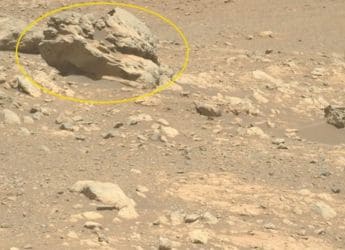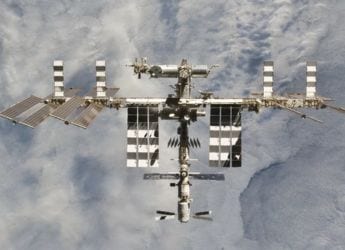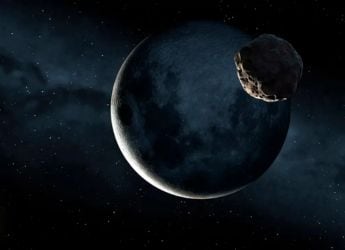- Home
- Science
- Science News
- NASA’s Perseverance Rover Finds Metal Rich Rock on Mars: What You Need to Know
NASA’s Perseverance Rover Finds Metal-Rich Rock on Mars: What You Need to Know
NASA’s Perseverance rover has identified Phippsaksla, a metal-rich rock likely to be an iron-nickel meteorite formed elsewhere in the solar system.

Photo Credit: NASA
Perseverance finds Phippsaksla, a metal-rich rock from beyond Mars, revealing asteroid and Martian clues
The Perseverance rover of NASA has been able to discover a strange rock rich in metals on Mars, which can be a result of a visitor to the Earth. The rock, which is dubbed Phippsaksla, was discovered in Jezero Crater and is unique with its bulbous moulded appearance. Its composition has been analysed and has been found to be very high in iron and nickel, a composition that is not common in the Martian rocks but rather common in meteorites. According to scientists, it means that the rock was formed in other places within the solar system.
Discovery of a Possible Meteorite
According to NASA, Perseverance first spotted the boulder on Sept. 19, 2025 (Sol 1629) in the Vernodden area of Jezero Crater. The rock has a sculpted, high-standing profile that caught scientists' attention. Using its SuperCam laser spectrometer, the rover found it to be exceptionally rich in iron and nickel. Such a metal-rich composition is rare for Martian bedrock but common in iron-nickel meteorites, suggesting the boulder “formed elsewhere in the solar system.” NASA notes this is likely the first meteorite Perseverance has discovered, whereas previous rovers Spirit, Opportunity, and Curiosity have found similar iron-nickel fragments on Mars.
Scientific Significance
Researchers indicate that the discovery of a meteorite on Mars led to fresh developments in the history of the planet as well as the solar system. Iron-nickel meteorites are normally created at the centers of the old asteroids, and as a result, Phippsaksla might add details to the old asteroids. Since the rock is sitting in a terrain of impact-modified land, its position can be used to recreate sections of the geologic history of Mars.
Get your daily dose of tech news, reviews, and insights, in under 80 characters on Gadgets 360 Turbo. Connect with fellow tech lovers on our Forum. Follow us on X, Facebook, WhatsApp, Threads and Google News for instant updates. Catch all the action on our YouTube channel.
Related Stories
- Samsung Galaxy Unpacked 2025
- ChatGPT
- Redmi Note 14 Pro+
- iPhone 16
- Apple Vision Pro
- Oneplus 12
- OnePlus Nord CE 3 Lite 5G
- iPhone 13
- Xiaomi 14 Pro
- Oppo Find N3
- Tecno Spark Go (2023)
- Realme V30
- Best Phones Under 25000
- Samsung Galaxy S24 Series
- Cryptocurrency
- iQoo 12
- Samsung Galaxy S24 Ultra
- Giottus
- Samsung Galaxy Z Flip 5
- Apple 'Scary Fast'
- Housefull 5
- GoPro Hero 12 Black Review
- Invincible Season 2
- JioGlass
- HD Ready TV
- Laptop Under 50000
- Smartwatch Under 10000
- Latest Mobile Phones
- Compare Phones
- Honor 500
- Honor 500 Pro
- Lava Agni 4
- Wobble One
- OPPO Reno 15 Pro
- OPPO Reno 15
- Vivo Y500 Pro
- Realme GT 8 Pro Aston Martin F1 Limited Edition
- Asus ProArt P16
- MacBook Pro 14-inch (M5, 2025)
- iQOO Pad 5e
- OPPO Pad 5
- Huawei Watch GT 6 (41mm)
- Huawei Watch GT 6 (46mm)
- Acerpure Nitro Z Series 100-inch QLED TV
- Samsung 43 Inch LED Ultra HD (4K) Smart TV (UA43UE81AFULXL)
- Asus ROG Ally
- Nintendo Switch Lite
- Haier 1.6 Ton 5 Star Inverter Split AC (HSU19G-MZAID5BN-INV)
- Haier 1.6 Ton 5 Star Inverter Split AC (HSU19G-MZAIM5BN-INV)

















